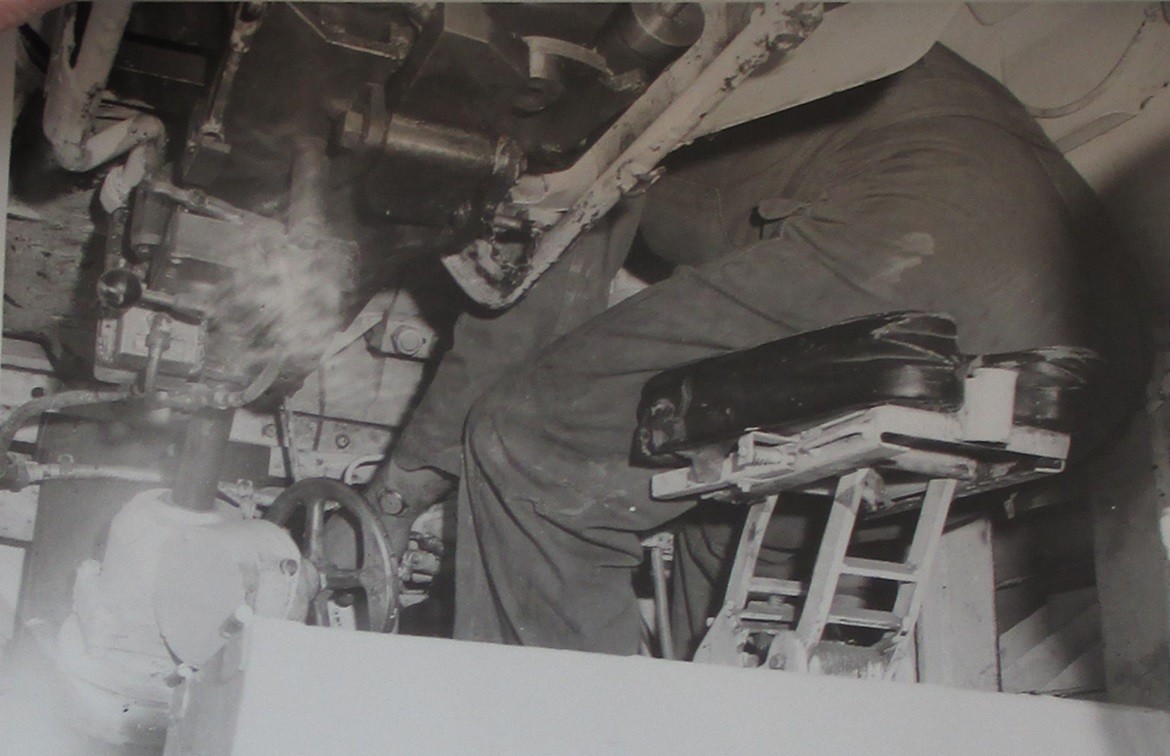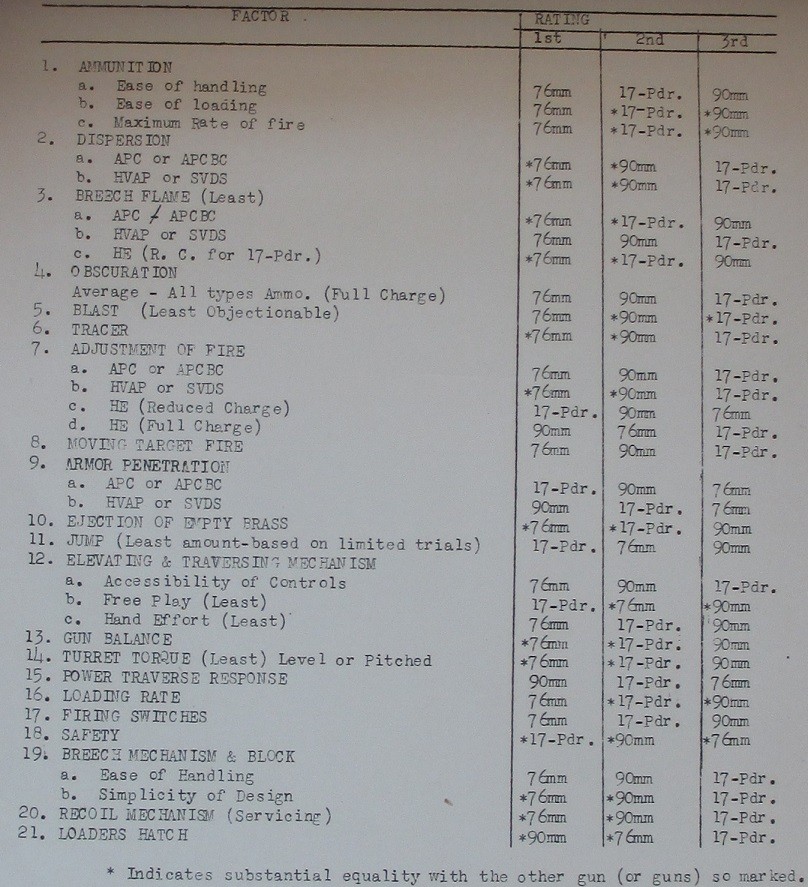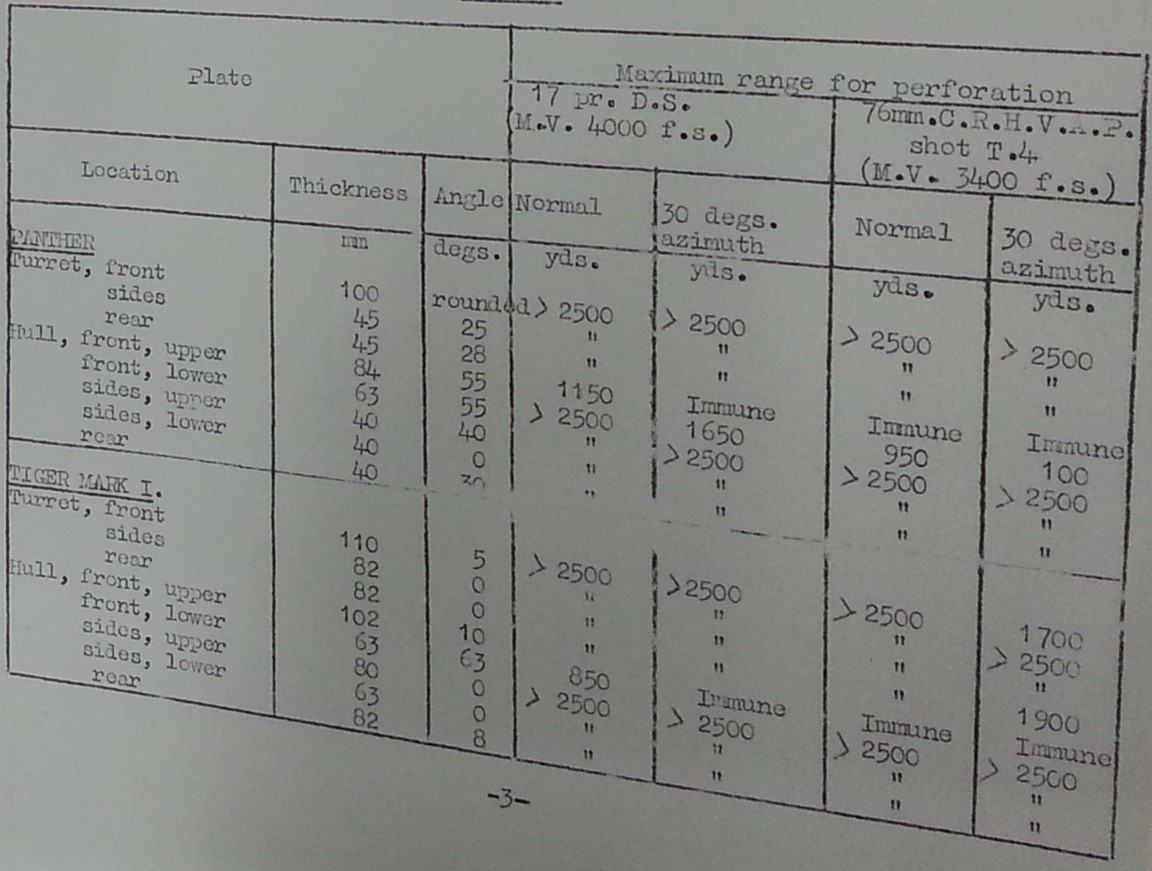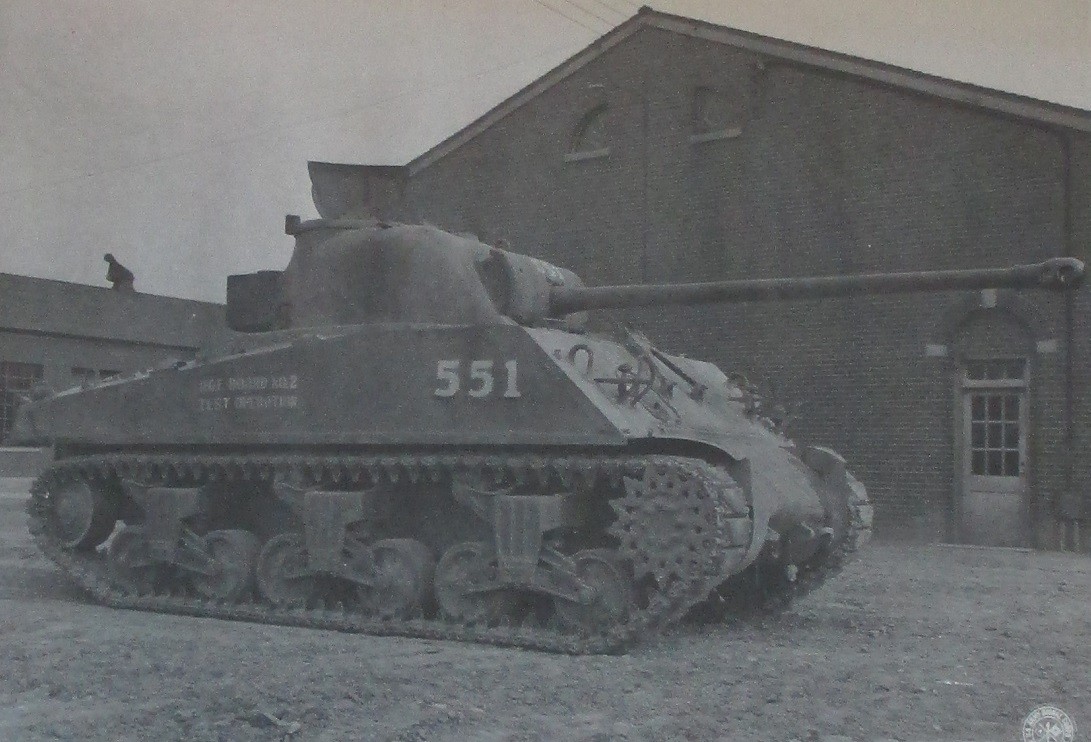The Chieftain's Hatch - Firefly: Part III

This is the third and final part of the look at the US Army's testing of the British 17pr conversion of the M4. If you missed them, these are hyperlinks for Part 1 and Part 2. I'll finish off the report, and then make some observations of my own.
Continuing on from where we left off:
Test 9. Armor penetration.
Everybody’s favourite.
These were the official ratings in introduction of the report (I’ve done some photo-chopping to make it clearer)

The target plate was a 4.5’ x 5.5’ panel 6” thick at 30 degrees fired at 1,050 yards.
APCBC was measured as going through about 7.5” of metal, but SVDS demonstrated a problem. Two impacts were observed on the target. One of the two was sufficiently shallow that it was presumed to have been a ricochet off the ground in front of the target. The other impact happened to superimpose on top of a 76mm HVAP impact, so though it went all the way through, the exact effect could not be determined. After firing 38 rounds SVDS to attain these two impacts, they gave up and went on to do something more productive with their time.
90mm APC/AP was disappointing, with the shells shattering, though it was fired from a 550-round tube with a velocity of under 2,600fps instead of the nominal 2,800fps. The HVAP round, however, punched through not only the armour plate, but also the 1.5” of the hull of the M3 medium behind it against which they had leaned the plate.
The page giving the 76mm penetration was missing from the report, but the HVAP impact subsequently superimposed by SVDS was stated as a ‘partial penetration’.

Test 10: Ejection of Empty Brass.
Short and sweet, this one.
No instances of failure to eject were ever noticed during firing of the 17-pounder. Similarly, there were no failures recorded in testing for the 76mm. The 90mm also always ejected, unless one happened to be firing HVAP from the muzzle brake version in which case it never ejected.
Test 11: Jump firing.
Ten rounds APCBC were fired in two-round groups at five aiming marks at a target at 100 yards, with the difference between the two rounds being measured. In the final analysis, the figures were 0.78mil left, 0.15 mil down. For the M4A3(76), the figures were 0.4mil right, 0.9mil down, and for the M26, 0.3mil right, 1.3mil down.
The report then goes on to say “Ordnance Department and Service Board firings indicate that jump varies in magnitude and sometimes in direction between tanks of the same model mounting the same gun. Jump data acquired from firing less than ten identical units is considered to be of little significance”. So much for Test 11.
Test 12: Operation of elevating and traversing mechanisms.
We’re starting to get into less interesting tests here, things will go quickly from this point on as I’ll start skipping a lot of the figures.
Four experienced gunners were brought in to give their opinions of the layouts of the controls of the different tanks. They also measured free play in the mechanisms and the amount of effort required to operate the controls.
“The elevating handwheel for the 17-pounder gun is located well forward directly under the gun and is difficult to reach; this results in an uncomfortable, unsteady position for the gunner, especially when he employs turret traverse. This condition is less aggravated when employing power traverse. The traversing controls are located identically to the M4 series and are considered to be satisfactorily accessible”

The 17-pounder turret was rated as in between the 76mm and 90mm tanks in terms of force of effort required, and with the least amount of free play.
Test 13: Gun balance.
“17 pounder is balanced with the chamber unloaded and counterweight in place. It is approximately 350 inch-pounds out of balance with a round of APCBC in the chamber.
76mm with counterweight is balanced when the chamber is loaded. The 90mm tank gun M3 is approximately 50,000inch-pounds out of balance and requires a coil spring equilibrator to reduce handwheel effort to a usable standard.”
Test 14: Turret Torque.
The report notes that torque figures can vary between tanks of the same model, and that a comparative test is more or less useless. However, the acceptable torque requirements to move an M4 series turret was established as 200ft/lbs maximum. Measurements of the 17pr turret averaged at about 400ft/lbs on level ground to start the turret moving, and over 1,000 ft/lbs at a 20 degree slope. As a result, the Firefly turret was concluded to be out of balance.
Test 15: Power Traverse Response
This test was not so much to simply see how quickly the turret traversed, but as to how well the traverse rates responded to a curve determined by the position of the controls. This determines relative ease of power tracking of a target. The Firefly turret ended up in between the M26 (best) and the Oilgear M4 (Worst).
Test 17, 18: Firing Switches and Safety. (Test 16 duplicated 1)
A fairly subjective test.
“The toe firing buttons for machinegun and main armament are so located that it is difficult for the gunner to position his foot comfortably. This condition is not serious and the arrangement is probably the most satisfactory possible in a relatively small, basketless turret”, this was considered slightly superior to the standard M4 as it allowed operation of either weapon when engaging in manual mode.
The electrical trigger was the same as on the regular M4.
After every loading of the 17pr a “reset” knob has to be operated by the loader in order to close the firing circuit. It functioned well, and added only a fraction of time to the loading process. There is also a mechanical safety operated by the loader, but it requires that he reach across the rear of the breech ring to do so. The 76mm and 90mm mechanical safeties are operated by the gunner.
Test 19: Breech Mechanism.
The reliability of the breech mechanism for the 17pr was satisfactory, but the assembly/disassembly process was a bit more difficult than on either the 76mm or 90mm guns. The weight of the 17-pounder breech block (123lbs) made it more difficult to handle than either the 90mm’s 102lb block or the 76mm gun’s 41lbs. Further, to remove the breech block for cleaning, the recoil guard must also be dismounted from the 17pr, this was considered a design deficiency.
Test 20: Recoil mechanism.
In terms of operational effectiveness, no difference was found between the three mechanisms. The 17pr was a little more difficult to service, but the additional tool and task was considered a minor issue in the larger scheme of things.
Test 21: Loader’s Hatch.
“The loader’s hatches on Medium Tank M26 and Medium tank M4A3 are considered to be more desirable because of simpler construction, spring loading (against closing) which aids in opening, and in an open position the hatch cover is almost flush with the turret top”
Overview.
At the end of the report, they provide a tabulated page of rankings by criterion.

The recommendations of the report were as follows:
“a. The 17-pounder tank gun Mk VII and Turret Assembly be considered generally inferior to like components of Medium Tank M26 (90mm Gun M3) and Medium Tank M4A3 (76mm Gun M1A2)
b. The British 17-pounder tank gun Mk VII and the German 75mm Gun KWK-42 be made the subject of further study by qualified gun design personnel and the desireable features of both weapons be considered in the design of a superior gun for use in the development medium tank”
Chieftain's Personal Commentary
So as far as both Ordnance and Army Ground Forces (Armoured Force and Tank Destroyer Board both partook in the Fort Knox tests) were concerned, their staying with the M4(76) instead of buying/building Firefly was justified. But the ultimate test is the battlefield, were they correct if that is brought into play?
I submit that there is an argument that yes, in practice it was the correct decision as well. The bottom line question is “What could the 17pr Sherman Firefly do that the 76mm M4 could not do at least as well, if not better?” The answer is basically nothing. Both tanks were more than capable of reliably dealing with Panzers, StuGs and Tigers from all angles and at reasonable ranges. Neither tank had much of a hope against King Tigers from the front, both had no difficulty from the side. As the tests at Isigny showed, neither could reliably penetrate the front of a Panther, except at close range. There was perhaps a narrow band from at closer range where 17pr had a more reasonable expectation of killing Panther, while the 76mm was being a bit optimistic (The short range band at maybe 400-500m where SVDS might still actually go in the direction you were aiming while 76mm was of questionable penetration), if you came around the corner and had to get a round off quickly enough that you didn't have time to aim for the turret. In pretty much every other factor of tanking, the 76mm M4 was the superior tank. It could engage targets more quickly, it could put more explosives on targets in a shorter amount of time, it was more accurate, it had safer ammunition stowage, kept the 5th man and bow MG (if you consider that as a good thing, which in WWII it seems to have been), was more comfortable…
But did the British share this assessment? Xlucine on the NA forum was doing a bit of digging in the British archives, and one of the documents he dug up had this table in it.

At first blush, it seems to give a good nod to the 17pr. It's good enough to punch through Panther's lower glacis at about 2km, while the 76mm has to get to under half that distance. HVAP can't go through the front slope at all by British standards, while SVDS will do it at a kilometer. (This assessment seem to be at variance with the Isigny tests which gave at least a chance to HVAP)
Good to know. Also, in practice irrelevant. I go back to the accuracy report the British put out that I referenced in US Guns German Armor Part 1.
At the range to which the 76mm must close in order to go through the Panther's lower glacis, SVDS is rated at about 14% chance to hit a 5'x2'target. The same report gives 76mm APC (Reputedly not as accurate as HVAP) a 96% chance to hit the same sized target, which also happens to be about the size of the turret. Which the 76mm tank may as well aim for instead at a longer range anyway. Where is the practical advantage to the capability to puch through at extended range if you can't get the shell to hit to begin with? By the time Firefly gets close enough to hit the target, 76mm would be punching through as well anyway.

So why does Firefly get all the glory and positive reputation as 'Best Sherman'?
I suggest that it’s for the simple reason that it was there, and in numbers. The real advantage that Firefly had was not that the tank was better, but it was that the British Army had decided to implement it in substantial numbers before the invasion of Normandy. A number of 76mm tanks were sitting in the UK during D-Day, and the HVAP ammunition was sitting in storage, not in high-rate production in the US. American commanders simply did not think they particularly needed it. Why add extra ammunition to the logistical tail of the battalion? Why make a bunch of expensive HVAP ammo when the standard AP was good enough?
These assumptions that the Americans had were simply wrong. It was not the fault of the tank, or the people who had developed the tank and ammunition in time to partake in the Normandy invasion. It’s not to say that Firefly doesn’t deserve its reputation, but arguably it does not deserve it as being a better tank than the 76mm M4, and the US forces are equally arguably given an undeserved hit for not choosing the tank themselves, beyond the 81 they had converted. (Possibly as much due to political pressure as anything else).
These were policy decisions. Remember that the decision had been made to build nothing but 76mm tanks starting 6 months before D-Day, but was not shipped over quickly enough. HVAP could have been built in greater numbers earlier, but absent a perceived need, the ammunition was given a lower priority for the raw materials. 76mm was a great tank. It just was never given the same opportunity to prove it.
You may click on Bob to discuss on the forum, or click on my Facebook page to raise my follower number.

